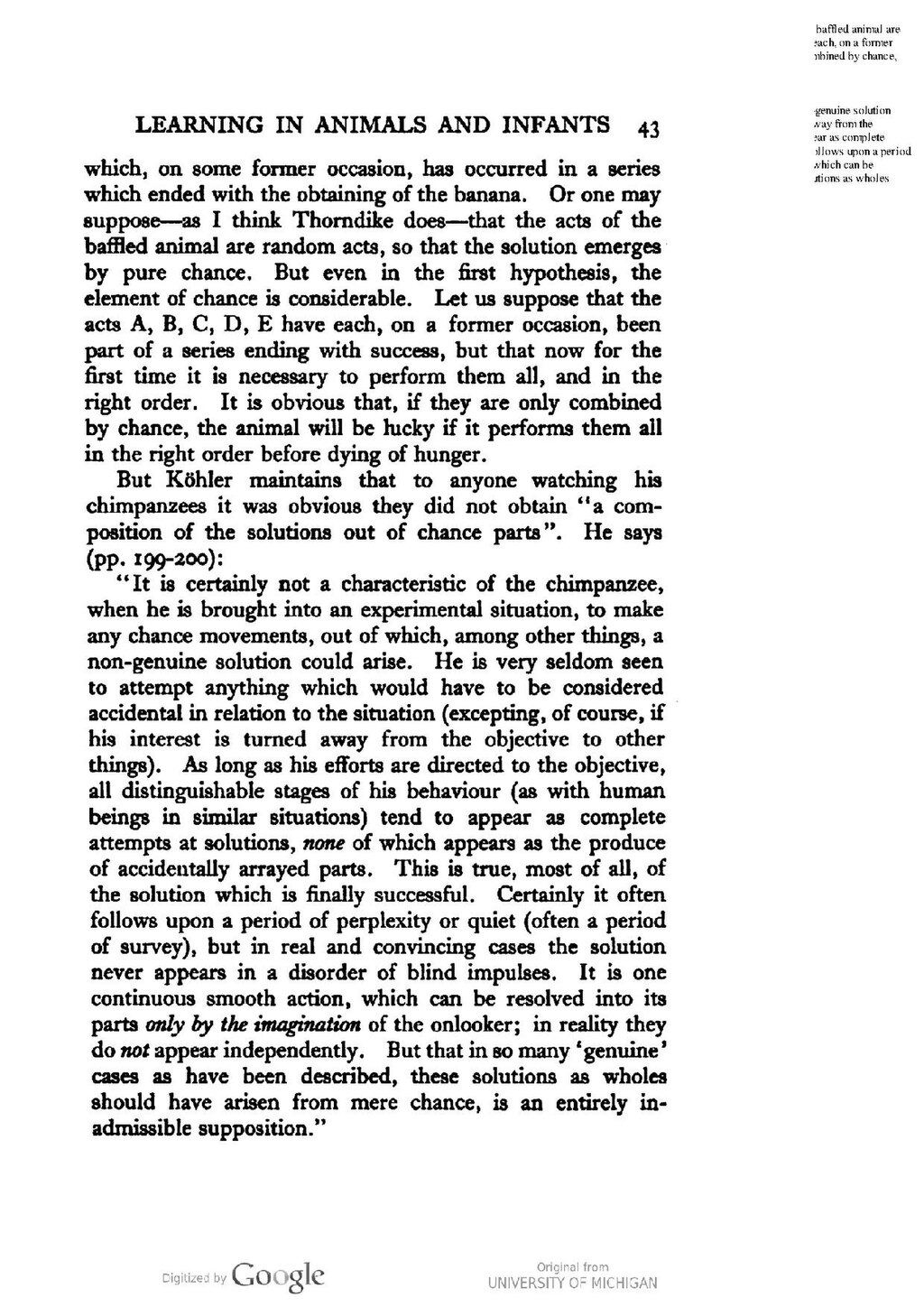which, on some former occasion, has occurred in a series which ended with the obtaining of the banana. Or one may suppose—as I think Thorndike does—that the acts of the baffled animal are random acts, so that the solution emerges by pure chance. But even in the first hypothesis, the element of chance is considerable. Let us suppose that the acts A, B, C, D, E have each, on a former occasion, been part of a series ending with success, but that now for the first time it is necessary to perform them all, and in the right order. It is obvious that, if they are only combined by chance, the animal will be lucky if it performs them all in the right order before dying of hunger.
But Köhler maintains that to anyone watching his chimpanzees it was obvious they did not obtain "a composition of the solutions out of chance parts". He says (pp. 199-200):
"It is certainly not a characteristic of the chimpanzee, when he is brought into an experimental situation, to make any chance movements, out of which, among other things, a non-genuine solution could arise. He is very seldom seen to attempt anything which would have to be considered accidental in relation to the situation (excepting, of course, if his interest is turned away from the objective to other things). As long as his efforts are directed to the objective, all distinguishable stages of his behaviour (as with human beings in similar situations) tend to appear as complete attempts at solutions, none of which appears as the produce of accidentally arrayed parts. This is true, most of all, of the solution which is finally successful. Certainly it often follows upon a period of perplexity or quiet (often a period of survey), but in real and convincing cases the solution never appears in a disorder of blind impulses. It is one continuous smooth action, which can be resolved into its parts only by the imagination of the onlooker; in reality they do not appear independently. But that in so many 'genuine' cases as have been described, these solutions as wholes should have arisen from mere chance, is an entirely inadmissible supposition."
